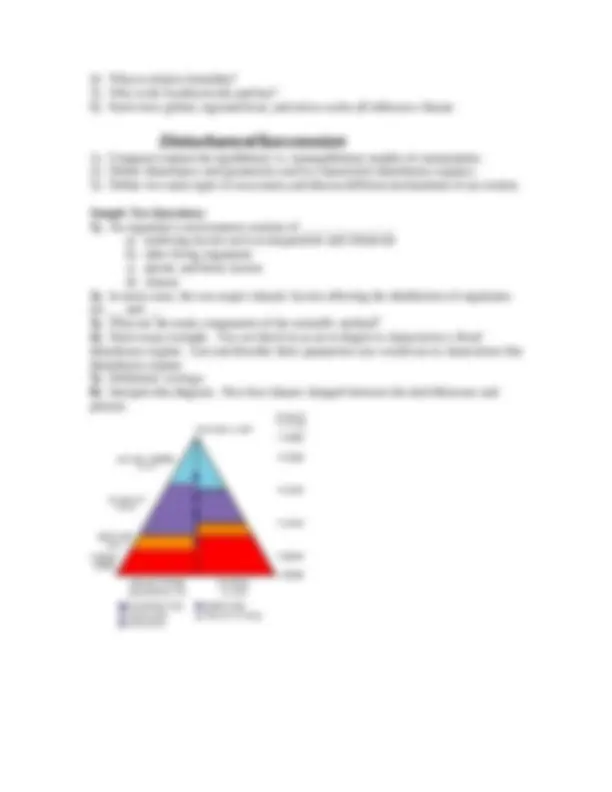



Study with the several resources on Docsity

Earn points by helping other students or get them with a premium plan


Prepare for your exams
Study with the several resources on Docsity

Earn points to download
Earn points by helping other students or get them with a premium plan
Community
Ask the community for help and clear up your study doubts
Discover the best universities in your country according to Docsity users
Free resources
Download our free guides on studying techniques, anxiety management strategies, and thesis advice from Docsity tutors
This study guide provides key points and sample test questions for a university-level ecology exam focusing on the ecology of the southwest. Topics include ecology basics, species evolution, biogeography, human ecology, and climate. Weekly lectures cover concepts such as symbiosis, life zones, evolution types, natural selection postulates, and adaptations in the southwest.
Typology: Exams
1 / 2

This page cannot be seen from the preview
Don't miss anything!


_YOU ARE RESPONSIBLE FOR ALL READING & LECTURE MATERIAL_
1). What is ecology, or what do ecologists do? 2). What are the four levels of organization of ecology? 3). What is symbiosis and what are the different types? 4). What are the four factors that affect the distribution of organisms?
1). How are we defining the Southwest for this course? 2). What are the major differences between the Colorado Plateau region and the San Juan Mountains? 3). What are the major life zones for these areas and what influences where these life zones are located?
1). Who was Charles Darwin and what is Darwinism? 2). What are the two main types of evolution? 3). What are the two main causes of microevolution? 4). What are the four postulates of natural selection from the origin of species? 5). What is allopatric speciation? 6). Discuss adaptations in the Southwest—these are in Peterson's RM and SW Forests
1). What is biogeography and what implications do past community distributions have for future distributions of plant communities? 2). What are the two main sources for biogeographic information? 3). What influence did the Laurentide Ice Sheet have on communities in the Southwest and how have some major vegetation species responded to different climates (20, years BP to present)?—look in RM Futures book
1). Know information about your group of native peoples of the Southwest (e.g., were they farmers, hunters, pastoralists, gathers).
1). What are four reasons for natural climate change over geologic time? 2). Climate 101- Why do we have different temperatures at the Earth’s surface? 3). Climate 101-Why do we have different amounts of precipitation at the Earth's surface?
4). What is relative humidity? 5). Why is the Southwest dry and hot? 6). Know how global, regional/local, and micro scales all influence climate.
1). Compare/contrast the equilibrium vs. nonequilibrium models of communities. 2). Define disturbance and parameters used to characterize disturbance regimes. 3). Define two main types of succession and discuss different mechanisms of succession. Sample Test Questions: 1). An organism’s environment consists of _______________. a) nonliving factors such as temperature and chemicals b) other living organisms c) abiotic and biotic factors d) climate 2). In most cases, the two major climatic factors affecting the distribution of organisms are __ and __. 3). What are the main components of the scientific method? 4). Short essay example. You are hired on as an ecologist to characterize a flood disturbance regime. List and describe three parameters you would use to characterize this disturbance regime. 5). Definition: ecology. 6). Interpret this diagram. How has climate changed between the mid-Holocene and present.